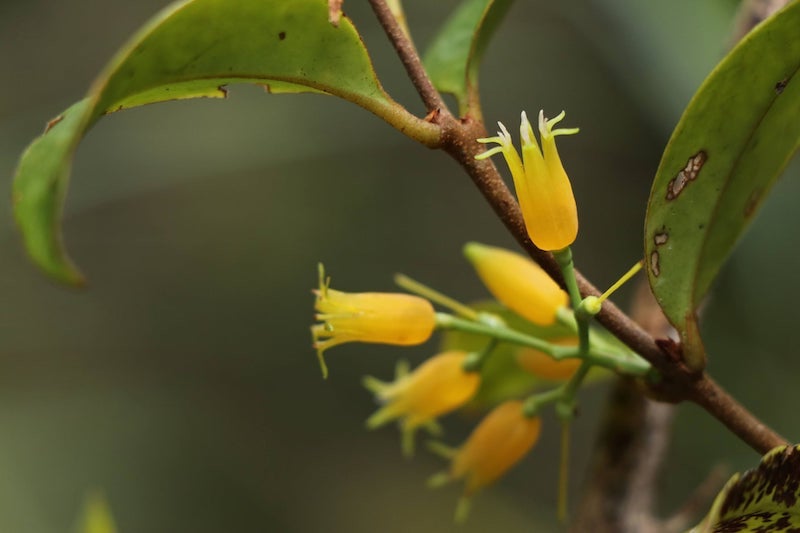DAVAO CITY (MindaNews / 06 June) — A new species of a flowering plant called ‘mistletoe,’ was discovered in Mt. Hamiguitan Range Wildlife Sanctury in Davao Oriental by researchers from the National Museum and Central Mindanao University in Bukidnon.
A statement released by the Department of Environment and Natural Resources (DENR)-Davao on Saturday, June 5, World Environment Day, said the new floral species called “Amylotheca cleofei Tandang, Galindon, & A.S.Rob.” belongs to the family Loranthaceae, collectively called “mistletoe.”
It said this new plant species was the first genus of mistletoe recorded in the Philippines and the fifth in the world. The plant, first documented in 2019, is endemic to Mt. Hamiguitan.
 The Department of Environment and Natural Resources (DENR)-Davao announced on June 5, World Environment Day, that a new floral species called “Amylotheca cleofei Tandang, Galindon, & A.S.Rob” belonging to the family Loranthaceae, collectively called “mistletoe,” was discovered in Davao Oriental’s Mt. Hamiguitan Range Wildlife Sanctary. Photo courtesy of DENR-Davao
The Department of Environment and Natural Resources (DENR)-Davao announced on June 5, World Environment Day, that a new floral species called “Amylotheca cleofei Tandang, Galindon, & A.S.Rob” belonging to the family Loranthaceae, collectively called “mistletoe,” was discovered in Davao Oriental’s Mt. Hamiguitan Range Wildlife Sanctary. Photo courtesy of DENR-Davao
The DENR said the “mistletoe,” known for their “exceptional lifestyle as a hemiparasite,” propagates through birds that spread their seeds to other host plants.
“When a bird eats the mistletoe fruit and poops (excretes), the sticky seed will attach to the branch and a specialized root-like structure called haustorium will emerge and penetrate to the host tree or shrub to extract water and nutrients for its growth and nourishment,” it added.
In a post on social media on Saturday, the National Museum of the Philippines said its researchers, Danilo Tandang and John Michael Galindon of the Botany and National Herbarium Division, discovered the plant species.
Their research on this new plant species was published in an international peer-reviewed journal, Phytotaxa. The co-authors of the paper included Noel E. Lagunday, Fulgent P. Coritico, Victor B. Amoroso and Alastair S. Robinson.
“Although the genus has been previously described from the Philippines, taxonomic revisions have transferred all Amylotheca species to its closely allied and more primitive genus, Decaisnina, wholly absenting Amylotheca from the Philippines,” it said.
It said the researchers believed that there are still several unknown species that have yet to be discovered in the forests.
Mt. Hamiguitan was inscribed as a United Nations Educational, Scientific and Cultural Organization (UNESCO) world heritage site on June 23, 2014 and declared as Association of Southeast Asian Nation (ASEAN) Heritage Park on October 21, 2014.
The Mt. Hamiguitan Range Wildlife Sanctuary, declared a protected area under RA 9303, measures 16,923 hectares covering San Isidro Municipality, Governor Generoso, and Mati City.
Recorded species on Mt. Hamiguitan are 963 species of flora and 440 species of fauna, 341 of which are endemic to the Philippines.
The plants include 729 angiosperms, 27 conifers, 164 ferns and allies, 17 mosses, 13 liverworts, and 13 lichens while the known fauna include 15 species of non-flying mammals, 11 species of flying mammals, 108 species of birds, 33 species of reptiles, 18 species of frogs, 142 species of butterflies, 31 species of dragonflies and damselflies, 46 species of spiders, four species of earthworms, 15 species of nematodes, and 17 species of freshwater fish. (Antonio L. Colina IV / MindaNews)
